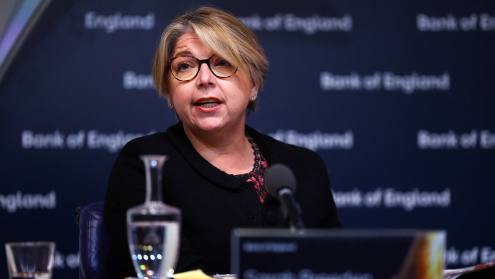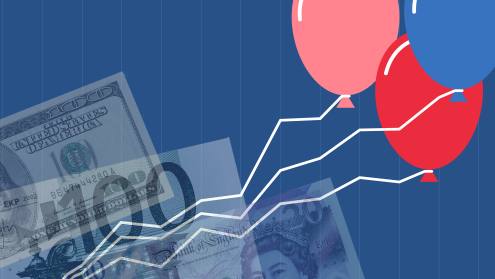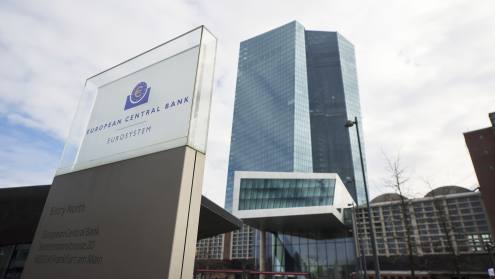Q: Interest rates have been increased to a 14-year high of 3.5%, but inflation has fallen. Are there plans to lower interest rates as part of a downward trend?
A: The [consumer price index] inflation base became 3.3% in May. But core inflation is still 3.9%. I think it’s really premature to discuss the pivot yet. We need more evidence that inflation is going down towards our target of 2%.
Q: The Bank of Korea has forecast 1.4% GDP growth this year. What will drive this?
A: We have revised down our growth rate slightly because the recovery of the semiconductor industry, which is pivotal in our exports, is more sluggish than we initially forecast. Also, even though China’s recovery is going on domestically, our exports to China are not picking up as fast as we wish.
We expect that in the second half of this year after China has adjusted their high inventory level, and together with the recovering cycle of the semiconductor, our growth rate will pick up.
Q: How key is the semiconductor industry to the economy as a whole? Will there be greater diversification?
A: Semiconductors, together with the car industry, is a very crucial sector for South Korea. It is not just for the exports: many small and medium-sized companies through the value chain depend on the semiconductor and the car industries.
The car industry accounted for 11.4% of total exports in 2022, while semiconductors accounted for 19.3%. The industries are clearly crucial. Our car exports are growing, with increased exports of electric cars to the US and Europe. On the other hand, in the last year semiconductor prices declined dramatically, which was a big shock. There are expectations that the prices will start to rise again, possibly from the second half of this year.
Q: You have been outspoken in the past on issues such as South Korea’s ageing population, and the need for more flexibility in the labour market. What changes do you think could be implemented first which would have the greatest impact on the country’s economy?
A: We really have to differentiate between the short-term issues versus long-term issues. We were relatively immune to the Covid-19 pandemic, compared with other countries, and our GDP (gross domestic product) hasn’t dropped much in this time.
Inflation is not as high as compared with the US and Europe. Because our output gap was lower due to the successful containment of Covid-19, we had relatively high inflation by Asian standards. During July 2022 it reached 6.3% and we had to implement a tighter monetary policy.
a more expansionary fiscal and monetary policy would be a mistake
However, because of the rapidly ageing population, our potential growth rate is declining quite fast. We have to address this slowdown structurally and the population factor in impacting our GDP growth rate. People may rely on a more expansionary fiscal and monetary policy to address this issue, but this would be a mistake. Population growth won’t be restored by a fiscal expansion, and those expansionary policies would cause real estate and asset price hikes, rather than any positive outcomes.
This needs to be addressed structurally first. We have to increase female labour participation, and have to utilise our resources to help reduce childcare costs. Also, our perceptions have to change. We have an excellent female labour force and they should not be discriminated against in terms of promotion or business, but the old culture has to change.
Our immigration policy has to change. In respect of the rising elderly population, we will need more healthcare workers, which will likely mean greater immigration.
Monetary and fiscal policies are not the answers – we need to focus on structural reform to tackle these issues.
Q: With geopolitical issues under discussion, what do you consider to be the biggest threat to South Korea’s economic stability?
A: The Ukraine war is the most important risk in the world and has been a root cause of many uncertainties. If another escalation happens, it may increase oil or food prices again. In turn US inflation may rise, and they may need to tighten monetary policy, which will have an impact around the world. In order to disentangle many international issues, the first path is to stop the war. There needs to be international effort to resolve the issue.
South Korea relies heavily on trade, and the geopolitical tensions between the US and China will have a negative impact on us. But from South Korea’s perspective, this is not just due to the geopolitical issues. We have benefited from the rise of China over the past 20 years. In some sense, China’s rapid growth from when they joined the [World Trade Organization] provided a new market for us.
Read more on South Korea
After the 1997 Asian financial crisis, South Korean industry needed to do structural reform to move up the ladder, because, at the time, our labour cost was increasing and we needed to move to higher-value and service industries. China’s emergence provided more than 10 years of time to delay [the needed] structural reforms.
But we forget that we have caught up with Japan by working hard and modernising. In turn, Japan’s exports to South Korea have declined quite significantly. The same thing is happening now with China as they become more competitive. It is not just trade tensions, but South Korean companies should have realised this earlier and diversified their supply chains and enhanced productivity to create new industries, and not rely on low-cost manufacturing.
We are seeing less current account surplus with China, which is a result of a combination of our complacent mindset that we can always export to China, without thinking of their ability to catch up. It is not too late, and companies are trying to find new supply chains, and we are trying to diversify our industries. Rather than weakening the supply chain we have to deepen the supply chain further, but also diversify at the same time.
Q: South Korea has been reluctant so far to explore the development of central bank digital currencies (CBDCs). Is the country’s stance on this likely to change?
A: You will be surprised how much work we have done regarding CBDC issues in the past. We have done many experiments and we have caught up with many issues that came from other countries. On the other hand, we are trying not to be the front-runner in introducing [a] CBDC.
If we introduce the CBDC first and then the US or Europe were to introduce a different system, we may have to change systems to meet the international standards. We did technical experiments and examined the legal issues and economic impacts, but we will be cautious in introducing the CBDC until the international standards have been decided.
In recent years, one lesson we learned from the experiments is that due to our well-developed fast payment systems, the benefit of [a] retail CBDC is relatively limited. The benefit of the CBDC for us will come from tokenised deposits, because the tokenisation of assets is becoming more common. We believe that if we make payments tokenised it could be a huge benefit.
For example, for asset settlement you need an intermediary for the central clearing and the collateral management. What we have in mind is matching the tokenised asset by introducing tokenised deposits based on the wholesale CBDC the central bank issued. This could make the capital markets system more efficient. If we combine the programmability of the CBDC into it, it could have more synergy.
We do not want to allow programmability directly, because the singleness of money will be jeopardised. We have [it] in mind to introduce the wholesale CBDC so the banks can issue their own tokenised deposits based on the wholesale CBDC and explore introducing programmability.
Using the current banking system, it could make the benefit of CBDCs more widely shared. It could also address the proliferation of the stablecoin, which could jeopardise financial stability. We are planning to launch a new project to explore the use case of tokenised deposits in a CBDC-based ecosystem.













